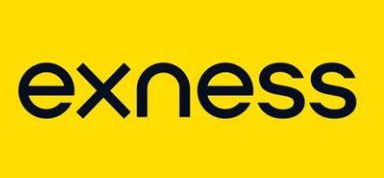In today’s financial landscape, mutual funds have emerged as one of the most popular investment options for individual investors. But what exactly are they, and how can they benefit you? This article breaks down the basics, aiming to demystify this important investment vehicle.
What Are Mutual Funds?
A mutual fund is a pool of money collected from many investors to invest in securities like stocks, bonds, money market instruments, and other assets. Managed by professional portfolio managers, mutual funds offer investors a way to diversify their investments without having to pick and manage the individual securities themselves.
Types of Mutual Funds
Understanding the different types of mutual funds is crucial for making informed investment decisions. Here’s a look at the most common categories.
Equity Funds
Equity funds, also known as stock funds, invest primarily in stocks. These funds aim to provide high returns and are considered relatively risky compared to other types of mutual funds. They are suitable for investors who have a higher risk tolerance and are looking for long-term growth.
Bond Funds
Also called fixed-income funds, bond funds invest in bonds or other debt securities. These funds are generally considered safer than equity funds but may offer lower returns. They are suitable for investors looking for regular income and lower risk.
Money Market Funds
Money market funds invest in short-term, high-quality debt securities. They are considered one of the safest types of mutual funds, offering lower returns than other mutual funds. These funds are ideal for investors seeking stability and liquidity.
Balanced Funds
Balanced funds, or hybrid funds, invest in a mix of stocks and bonds. The goal is to provide a balance of risk and return, making them suitable for investors looking for a moderate risk-reward ratio.
Index Funds
Index funds aim to replicate the performance of a specific index, such as the S&P 500. They are passively managed, which often results in lower fees. These funds are ideal for investors seeking market-average returns at a low cost.
How Do Mutual Funds Work?
When you invest in a mutual fund, you buy shares of the fund. The money from these shares is pooled together to purchase a diversified portfolio of securities. The fund’s performance is then tracked by the value of its holdings, and investors earn returns based on the fund’s performance, which can come in the form of dividends, interest, and capital gains.
Professional Management
One of the main advantages of mutual funds is professional management. Fund managers are responsible for analyzing markets, selecting securities, and managing the fund’s portfolio to achieve its investment objectives. This expertise can be particularly beneficial for individual investors who may not have the time or knowledge to manage their own portfolios.
Diversification
Diversification is a key benefit of mutual funds. By investing in a variety of securities, mutual funds help spread risk, which can lead to more stable returns over time. This diversification allows investors to gain exposure to different asset classes and sectors without having to buy individual securities.
Liquidity
Mutual funds offer liquidity, meaning investors can easily buy or sell shares of the fund at any time. This flexibility is advantageous for investors who may need access to their money on short notice.
Mutual Fund Performance and Returns
Evaluating mutual fund performance is essential for assessing their potential returns and risks. Here are some key factors to consider when analyzing mutual fund performance.
Past Performance
While past performance is not indicative of future results, it can provide insight into how a fund has managed different market conditions. Look for funds with a consistent track record of meeting or exceeding their benchmarks over multiple years.
Expense Ratios
Expense ratios represent the annual fees charged by mutual funds, expressed as a percentage of the fund’s average net assets. Lower expense ratios can lead to higher net returns for investors, so it’s important to compare this metric when evaluating funds.
Risk-Adjusted Returns
Risk-adjusted returns measure a fund’s return relative to its risk. Funds with higher risk-adjusted returns have historically delivered better performance for the amount of risk taken, making them more attractive to investors.
Benchmark Comparison
Comparing a fund’s performance to its benchmark index helps you assess how well the fund manager has achieved the investment objective. Consistent outperformance may indicate effective management.
Steps to Invest in Mutual Funds
Investing in these funds can be straightforward. Here’s a step-by-step guide to help you begin.
Define Your Investment Goals
Before investing, clarify your objectives—such as saving for retirement, building a college fund, or generating additional income. This will guide your decisions and help you choose the right funds for your portfolio.
Research Investment Options
After defining your goals, explore various funds that align with your objectives. Consider factors like fund type, past performance, fees, and risk level when selecting.
Open an Investment Account
To start investing, open an account with a brokerage or financial institution. Many firms offer online platforms that simplify researching, buying, and managing your fund investments.
Monitor Your Investments
Regularly review your mutual fund investments to ensure they continue to align with your goals and risk tolerance. Be prepared to make adjustments as needed, such as rebalancing your portfolio or switching funds if performance lags.
Conclusion
Mutual funds offer an accessible way for individual investors to diversify their portfolios, benefit from professional management, and achieve their financial goals. By understanding the basics of mutual funds and carefully evaluating their performance, you can make informed investment decisions that align with your objectives.
Whether you’re a seasoned investor or just starting, mutual funds can be a valuable addition to your investment strategy. As always, consider consulting with a financial advisor to ensure your investment choices are suited to your personal financial situation.
















